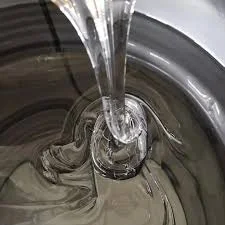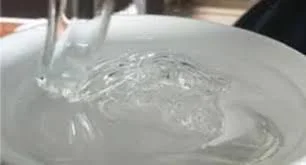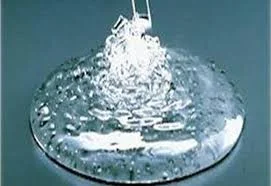Polyisobutylene (PIB) is a versatile polymer that finds applications in various industries, including automotive, adhesives, and packaging. Understanding the chemical mechanism of PIB is crucial to comprehend its unique properties and applications. In this article, we will delve into the chemical structure of PIB, its polymerization process, and the resulting properties that make it a valuable material in different sectors.
I. Chemical Structure of Polyisobutylene
Polyisobutylene is a synthetic polymer composed of repeating isobutylene units. Isobutylene, also known as 2-methylpropene, is a gaseous monomer with the molecular formula C4H8. Through a polymerization process, isobutylene molecules combine to form long chains of PIB. The chemical structure of PIB consists of a backbone of carbon atoms with hydrogen atoms attached to them.

II. Polymerization Process
The polymerization of isobutylene to form PIB can occur through various methods, including cationic polymerization and free radical polymerization. Cationic polymerization involves the use of a catalyst, typically a Lewis acid, to initiate the reaction. Free radical polymerization, on the other hand, relies on the generation of free radicals to initiate the polymerization process.
III. Molecular Weight and Chain Length
The molecular weight and chain length of PIB can vary depending on the polymerization conditions. The molecular weight is determined by the number of isobutylene units in the polymer chain. Higher molecular weight PIB has longer chains and exhibits different properties compared to lower molecular weight PIB. The chain length affects the viscosity, elasticity, and other physical properties of PIB.
IV. Properties and Applications of Polyisobutylene
Viscosity and Lubrication: PIB has excellent viscosity properties, making it an ideal additive in lubricants and greases. Its high molecular weight and long chains contribute to its thickening and film-forming abilities, enhancing the lubricating properties of various products.
Adhesive Properties: PIB's unique chemical structure gives it excellent adhesive properties. It can form strong bonds with a wide range of substrates, making it a valuable component in adhesive formulations. PIB-based adhesives are used in industries such as construction, automotive, and packaging.
Gas Barrier: PIB exhibits excellent gas barrier properties, making it suitable for applications in the packaging industry. It can prevent the permeation of gases, such as oxygen and moisture, thereby extending the shelf life of packaged products.
Flexibility and Elasticity: PIB's long chains and low glass transition temperature contribute to its flexibility and elasticity. This property makes it an essential component in the production of flexible films, gaskets, and seals.

V. Environmental Considerations
Polyisobutylene is considered a relatively environmentally friendly polymer. It is non-toxic, non-reactive, and does not release harmful emissions during its use. Additionally, PIB is resistant to degradation, leading to its long lifespan and reduced waste generation.
VI. Industrial Production of Polyisobutylene
The industrial production of polyisobutylene involves the polymerization of isobutylene monomers using specialized equipment and processes. One common method is the cationic polymerization process, which utilizes a Lewis acid catalyst, such as aluminum chloride or boron trifluoride. The catalyst initiates the reaction by forming a complex with the isobutylene monomer, leading to the formation of a reactive carbocation. The carbocation then reacts with additional isobutylene monomers, resulting in the growth of the polymer chain.
The polymerization process can be carried out in batch reactors or continuous flow reactors, depending on the desired production scale. Temperature, pressure, and catalyst concentration are carefully controlled to achieve the desired molecular weight and properties of the resulting PIB.
VII. Molecular Weight Distribution
Polyisobutylene can have a broad molecular weight distribution, meaning that the polymer chains can have varying lengths. This distribution can be controlled by adjusting the polymerization conditions, such as the catalyst concentration and reaction time. A narrow molecular weight distribution is desirable for certain applications, as it ensures consistent properties and performance.

VIII. Copolymers and Modification
Polyisobutylene can be copolymerized with other monomers to introduce additional properties or modify its characteristics. For example, copolymerizing isobutylene with small amounts of other monomers, such as isoprene or butadiene, can enhance the elasticity and flexibility of the resulting polymer. These copolymers, known as butyl rubber, find applications in tire manufacturing and other rubber products.
IX. Crosslinking and Vulcanization
Polyisobutylene can be crosslinked through various methods, such as chemical crosslinking or radiation-induced crosslinking. Crosslinking enhances the mechanical properties and heat resistance of PIB, making it suitable for applications that require increased durability and stability. Vulcanization, a specific type of crosslinking, involves the addition of sulfur or other crosslinking agents to improve the properties of PIB-based rubber compounds.
X. Future Developments and Research
Ongoing research and development efforts are focused on further improving the properties and applications of polyisobutylene. This includes exploring new catalysts and polymerization techniques to achieve precise control over molecular weight and distribution. Additionally, efforts are being made to enhance the biodegradability and sustainability of PIB, aligning with the growing demand for environmentally friendly materials.

Conclusion
Polyisobutylene's chemical mechanism, production process, and resulting properties make it a valuable polymer in various industries. Its unique structure, molecular weight distribution, and ability to be modified through copolymerization and crosslinking contribute to its versatility and wide range of applications. As research and development continue, the future holds promising advancements in the field of polyisobutylene, further expanding its potential uses and environmental sustainability.
